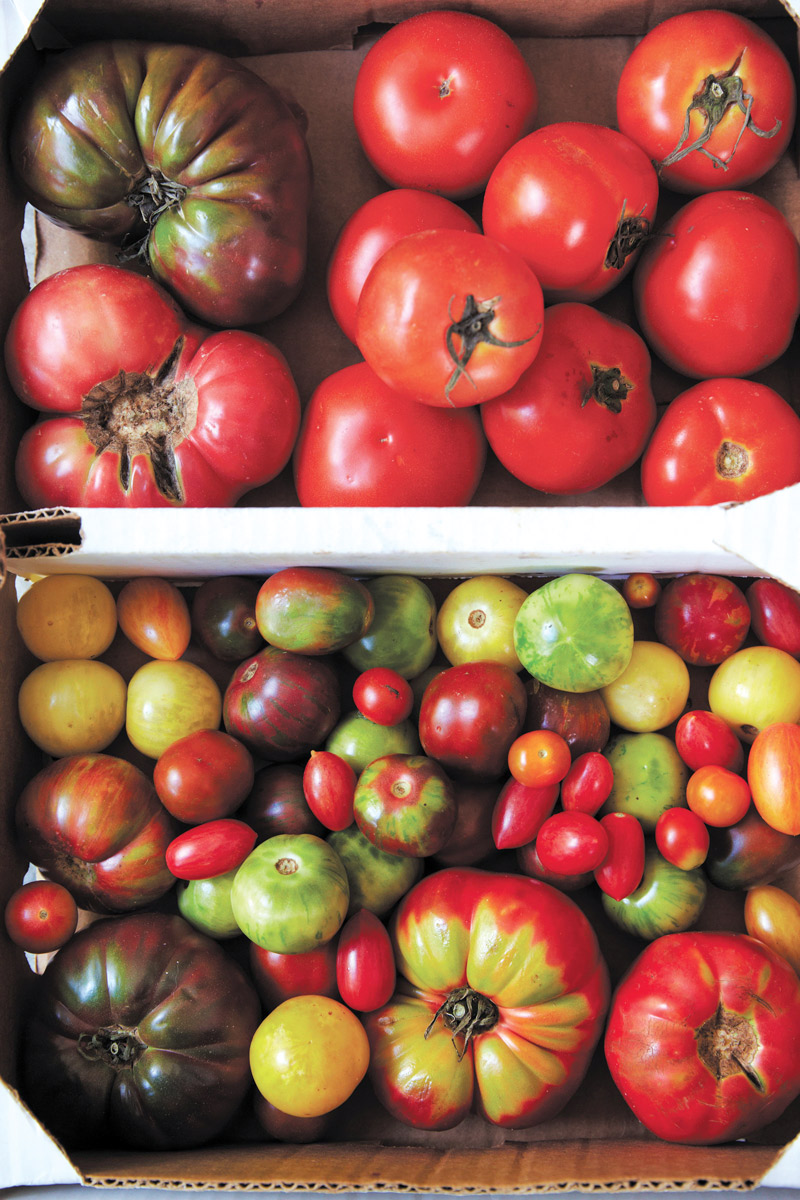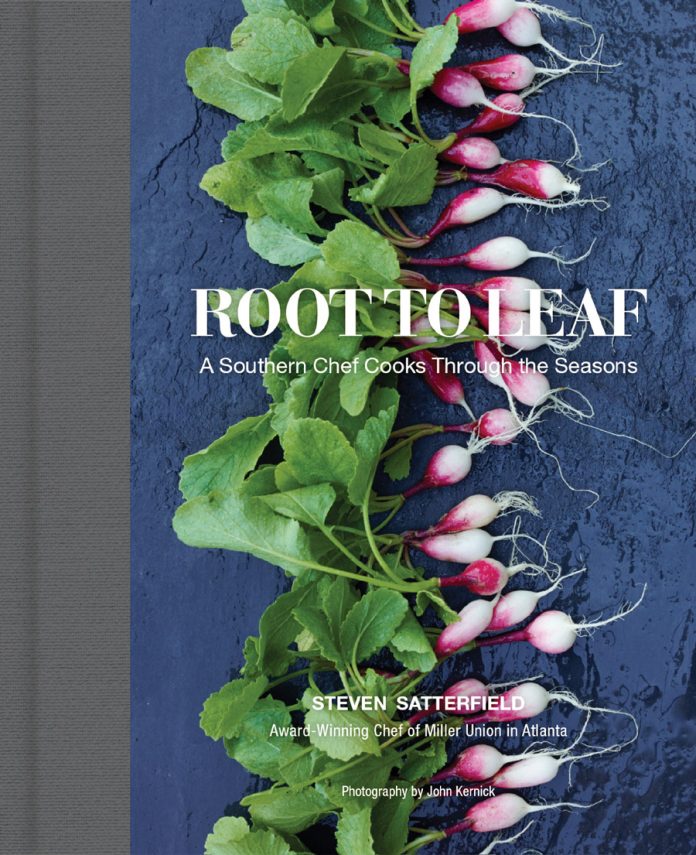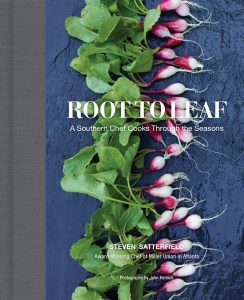Enter your information below for the chance to win a copy of Root to Leaf by Steven Satterfield. Based on his cooking style and approach to food at his Atlanta restaurant, Miller Union, Steven’s first cookbook, Root to Leaf, examines the world of seasonal produce, working its way through the year with accessible recipes and enticing photos of fresh ingredients and mouth-watering dishes. Read our interview with Steven below to learn more about the book.
Contest runs from July 28, 2015 through midnight on August 4, 2015. Hurry and enter to win!
Cooking through the year: let the seasons be your guide
Chef Steven Satterfield has traveled an unusual and varied route to becoming the respected chef he is today. Growing up helping in his mother’s and grandmother’s kitchens, Steven had an affinity for the culinary world from the beginning. But between going to school to study architecture, touring internationally as a member of a rock band, and working part-time restaurant jobs, Steven’s career path has taken many turns. While his history suggests that he would be successful in any trade, we are glad his focus on food has led him to become a master of one at his Atlanta restaurant, Miller Union.
Tell us about Miller Union’s focus on seasonal produce.
We serve what farmers are harvesting. When we started Miller Union, there were a number of restaurants using the phrase “farm to table” but not actually doing it. If you’re going to be a true farm-to-table restaurant, you  can’t ignore what farmers are pulling out of the ground and plucking from vines.
can’t ignore what farmers are pulling out of the ground and plucking from vines.
You say it’s the farmer’s job to grow the produce, but the cook’s job to acknowledge the farmer’s hard work by respecting the vegetable. Tell us more.
I think that’s our duty. Farming is back-breaking work that requires a lot of effort and involves many obstacles. And in the end there’s no guarantee—you can do everything right but still run into natural disasters. Sometimes we forget where our food comes from and what it takes to get it to the table.
Tell us about your cooking style.
I don’t like to manipulate or alter ingredients too much from their natural state. I try to enhance and highlight the best qualities of each fruit or vegetable or item on the plate. I try to respond to what I think tastes good and makes sense. Sometimes it’s intuitive, but it often takes a trial-and- error process.
Is the root to leaf concept the vegetable version of nose to tail?
Yes—it involves using every edible part of the plant. At Miller Union, we focus on using parts of the plant that usually get tossed. We dice up Swiss chard stems and add them to greens, wilt beet tops into a sauté or chop them into a salad, and use carrot tops in a sauce. This adds to the experience and also helps us respect the farmer’s hard work.
Is this what Southern food is meant to be?
Southern cooking was farm-to-table long before that term came around. People lived off the land—there was no other choice for survival. We’ve gotten detached from that concept because everything is made so easy for us now. 
Do you have advice for choosing vegetables at the farmers’ market or produce stand?
I like to circle the market to look at each stand before I start making my purchases. That way, I get an overview of what each stand has, can compare prices, know which produce looks the freshest, and which farmer has the most to sell.
Do seasonal changes at the market help your creativity?
By limiting your options, seasonal changes make you more focused. If you have every option available to you, each ingredient becomes much less special, and there’s no real sense of place. When you respond to what’s at the market, it opens you up to a whole world of new ideas and makes you really appreciate what’s there for the time you have it.
Do you recommend tasting vegetables at different stages of cooking?
With fresh produce, I like to taste what I’m cooking in its raw form first and think about its properties. Is it starchy? It may need to cook a little longer so that it tenderizes and turns sweet. Does it have a high water content? It might not need as much time in the oven because it’s going to steam from the inside. Then I like to taste throughout the cooking process to see how it changes. I can decide which texture and flavor I want to come through. And produce is the only thing you can do that with—you can’t try that with a piece of chicken! Well, you can, but you’ll regret it.
What do you hope will come from this book?
I want the recipes to be liberating for readers and for other ideas to open up for them. A lot of the recipes are simple building blocks that can be adjusted to whatever you find at the market. I want people to be more aware of where their food comes from and to react to the seasons. I want this book to be a source for people to learn about seasonality in the South.
PHOTOS REPRINTED, WITH PERMISSION, FROM ROOT TO LEAF BY STEVEN SATTERFIELD (HARPER WAVE, 2015) PHOTOGRAPHY COURTESY OF JOHN KERNICK







looking forward to reading this cookbook
This sounds like a great cookbook. Wonder how many of us throw away things that would be delicious and good for us if we knew how to prepare them.